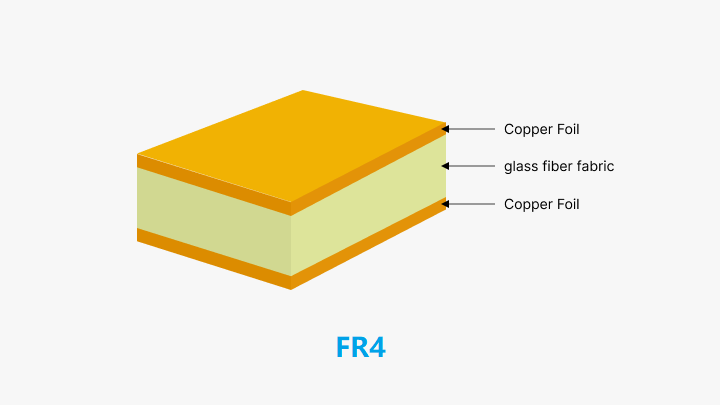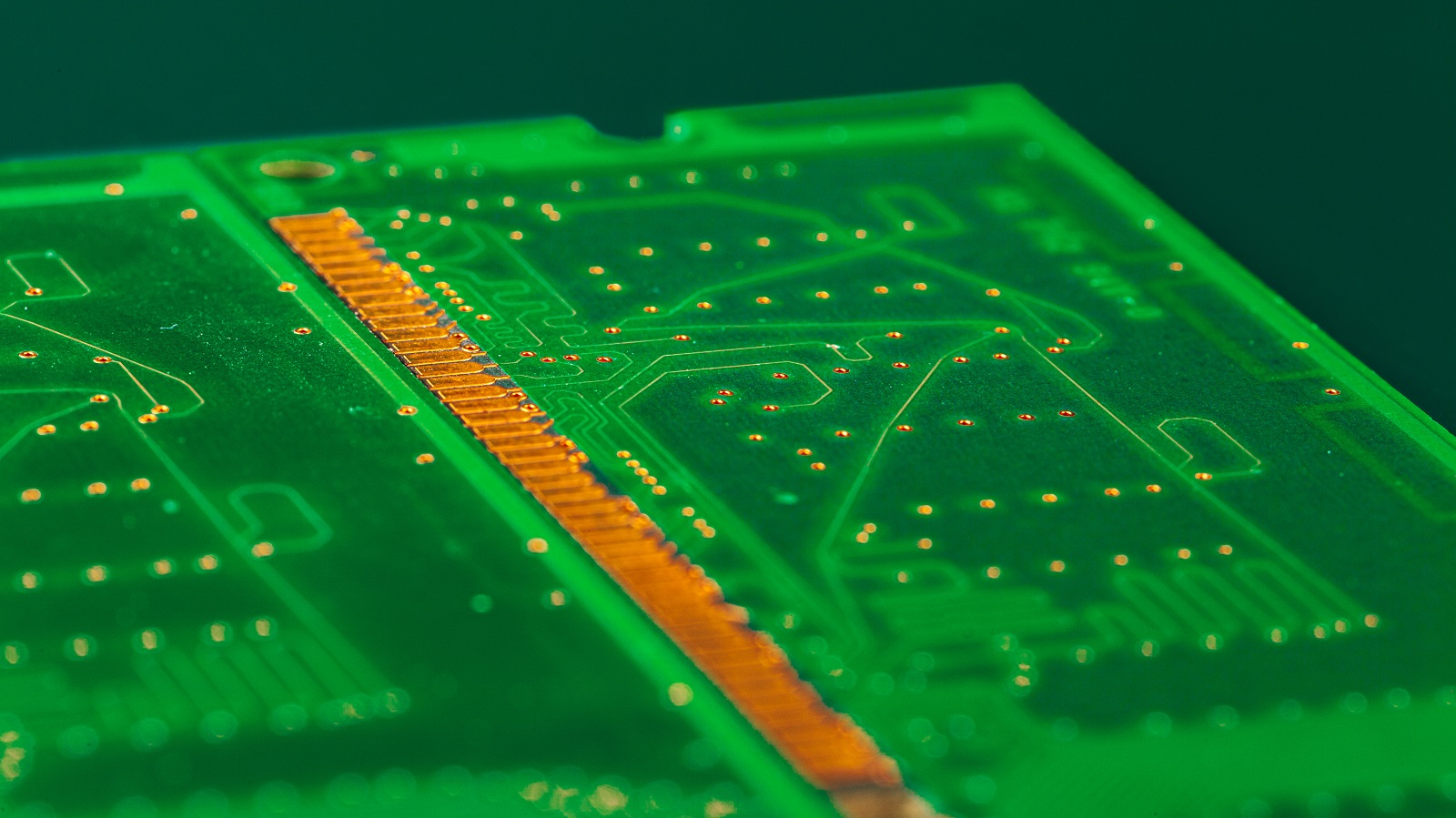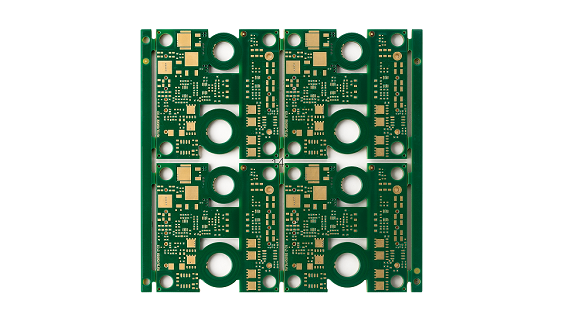FR4 Material for Printed Circuit Boards
FR4 is a key PCB substrate with excellent electrical insulation, mechanical strength, and thermal resistance. It's valued for its balance of cost and performance, crucial for a wide range of applications.
In the advanced and fast world of electronic manufacturing, material selection has a very basic impact on functionality, reliability, and economic viability. Among these materials, FR4 enjoys its status as one of the most important elements given such a remarkable set of properties that turn it so suitable for a wide range of applications. It is for this reason that at PCBX, we seek to remove some of the mystery surrounding this very common material, thereby helping our customers make informed decisions with regard to board design and substrate material selection. FR4 is a standard benchmark in base materials for PCBs and presents the best combination of mechanical, electrical, and thermal properties. This guide will look in-depth into FR4, its composition, its properties, and its importance to the electronics industry.
What is FR4?
FR4 describes a grade of flame-resistant composite material used predominantly as the substrate in printed circuit boards. It has since become famous for its robust electrical insulating properties and mechanical strength that make the material so indispensable within the electronics sector. The "FR" in FR4 stands for "Flame Retardant," indicating just what the material does: it resists ignition and self-extinguishes when exposed to heat. FR4 materials result in consistency in quality and performance for use in different applications under the standardization of NEMA - National Electrical Manufacturers Association.
Composition and Structure
The two major ingredients of the FR4 material are woven fiberglass cloth and epoxy resin. Most fiberglass cloth is produced from E-glass, or electrical glass, which features good tensile strength and dimensional stability. The epoxy resin acts as a binder matrix, embedding the fibers of the fiberglass and offering excellent electrical insulation and thermal resistance characteristics.
This will usually include the lamination of multiple layers of copper foil onto an FR4 core under conditions of heat and pressure. These laminated structures provide the mechanical backbone in most of the PCB designs while offering a needed dielectric matrix, which is helpful in maintaining electrical isolation in multilayer PCB designs. The typical composition is about 60% fiberglass and 40% epoxy resin in weight, although the exact mixture can vary depending on the application and may alter a host of properties including rigidity, flexibility, and thermal tolerance.

Relevance to the Electronics Industry
FR4 has become one of the most important materials in PCB manufacturing because many of the following superior attributes:
Mechanical Strength and Dimensional Stability
FR4 maintains its structural integrity under various stresses, conditions of the environment, and shock absorption to make PCBs reliable in the long run. The material resistance against deformation by mechanical pressure is significant for parts operating under conditions of either static or dynamic stresses of an industrial nature.
Electrical Insulation
FR4 electrically insulates against passing unwanted currents between these closely packed conductive traces. This prevents the possible short circuits that might cause component failures and forms the basis for increasingly complex and compact printed circuit board designs, particularly in their multilayer configurations.
Thermal resistance
FR4 has the capacity for much operational heat generated by high-speed processors and power components without degradation. There are high Tg versions for applications that require high thermal performance; the Tg ranges from approximately 170°C to 180°C.
Value for Money
FR4 strikes a perfect balance between performance and cost, hence becoming the immediate choice for any manufacturer seeking to optimize efficiency without excessive costs. The developed supply chains also add to the popularity and ease of procurement.
Versatility
FR4 is available in several thicknesses and grades to support simple to complex designs in PCB, hence accommodating requirements across the spectrum-from basic consumer gadgets to multifaceted industrial systems.
Properties of FR4
Flame Retardant
FR4 meets the UL94V-0 rating; this is one of the higher grades for flame retardancy. It describes the material's ability to self-extinguish rapidly when exposed to open flames, which prevents fire from propagating within devices. This flame retardancy in FR4 is developed by adding some special chemicals; these include a number of flame-retardant additives that make the material much safer, as it reduces the chances of fire hazards.
Mechanical Properties
Tensile Strength: FR4 normally exhibits tensile strength in the range of 300 to 500 MPa, enabling it to bear such high-level stress at fabrication, assembly, and operation with mechanical integrity through the operational life of a device.
Flexural Strength: FR4 exhibits flexural strength in the range of 350 to 600 MPa, which enables it to bear the loads arising due to bending without deforming. These are quite vital in applications that involve physical bending or pressure on PCBs.
The mechanical reliability of FR4 makes it suitable for myriad applications, from sturdy industrial installations to consumer electronics where both static and dynamic stress factors are present.

Electrical Properties
Dielectric Constant (Dk): Ranges generally from 3.8 to 4.8, the dielectric constant allows for controlled signal propagation, which is vital in high-frequency applications.
Dissipation Factor (Df): DF ranges from 0.015 to 0.025, which forms a measure of how much energy is dissipated as heat by the material. Sometimes viewed as "bad," these values are necessary for the stability of a signal, especially in high-frequency designs.
The electrical properties of FR4 will ensure strong performance in applications requiring dependable isolation and low signal loss.
Thermal Properties
Glass Transition Temperature (Tg): FR4 makes a transition from rigid to semi-flexible at Tg. Selection of grade based on Tg is extremely important in applications involving very high ranges of temperature, as that ensures that the material retains its properties.
Thermal Conductivity: Medium range thermal conductivity represents that active thermal management can and should be introduced for effective dissipation of heat in high-power applications.
Moisture and Chemical Resistance
FR4 has low moisture absorption, hence it remains stable even in conditions of high humidity and extends its appropriateness to environments where moisture exposure is a factor. Chemical resistance instills durability for applications involving hostile industrial settings in which chemical exposure may compromise materials.
Grades and Specifications of FR4
FR4 grades are available for different needs, such as:
Regular FR4: meant for general application needs, hence a balance in mechanical, electrical, and thermal performances.
High Tg FR4: higher thermal stability, which is crucial for high-performance application needs
High Frequency FR4: for applications in RF and Microwave range, the lower dielectric constant ensures minimal loss to the signal.
Understanding such variations enables designers to select the material needed based on the requirements of the application in question, hence enhancing performance and reliability in electronic devices.
Conclusion
FR4 is not dispensable in the manufacture of electronics because it basically supports everything from the simplest to the most complex applications of printed circuit boards. Its balance and versatility of cost performance have made FR4 one of the core base materials in electronic design nowadays. At PCBX, we are committed to giving full support in order for any given project to use FR4's strengths by gracefully working around limitations with a strategic approach. Whether basic devices or complex systems consisting of different parts, successful and efficient completion of any electronics design depends more on the understanding and correct application of FR4 principles.
Hot Tags:
Contact us

If you can't find what you're looking for, please contact us.


